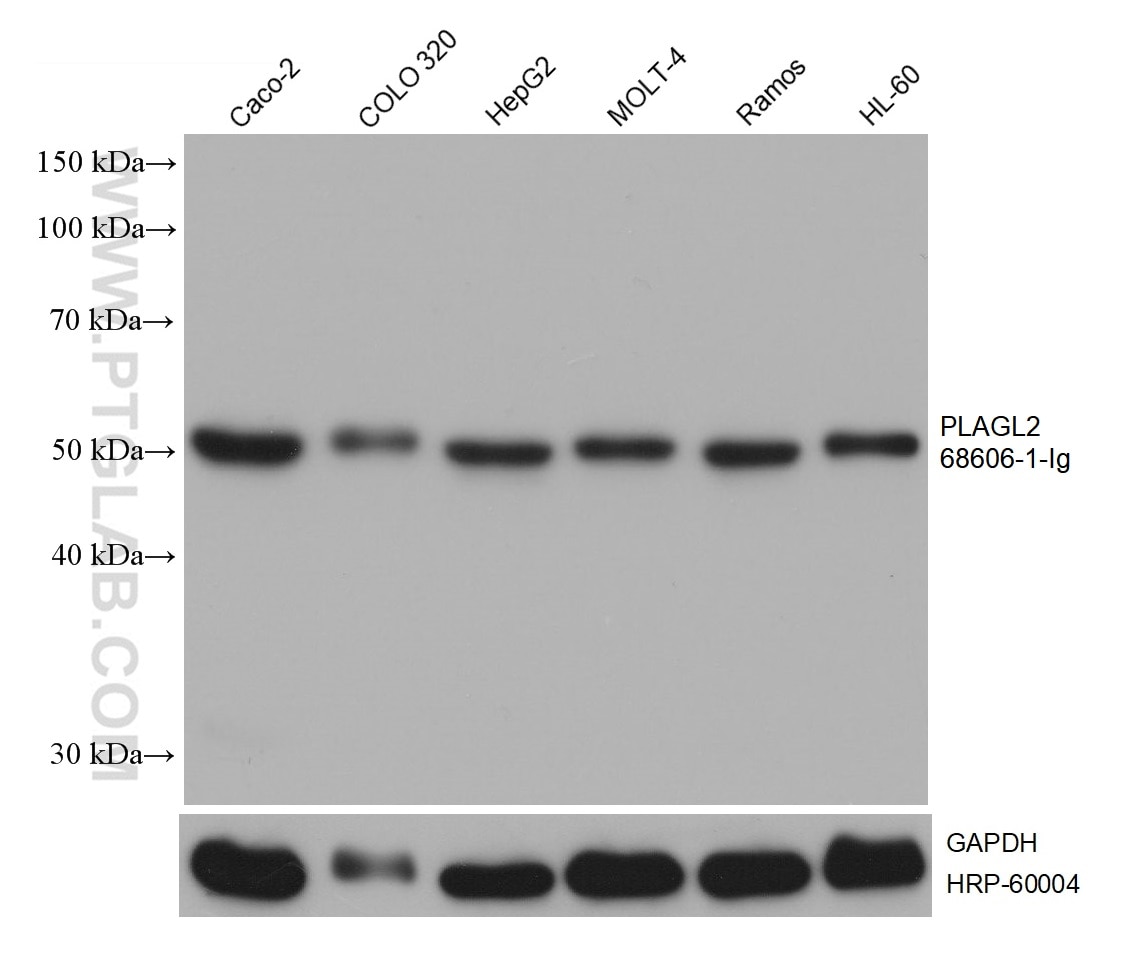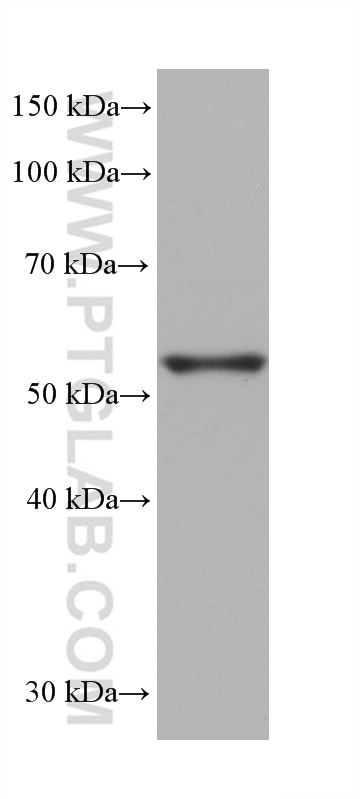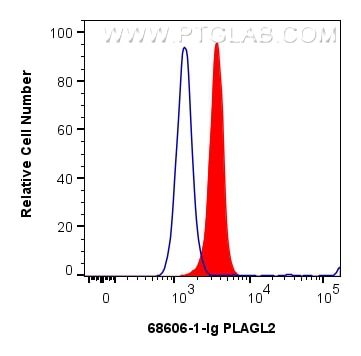Validation Data Gallery
Tested Applications
| Positive WB detected in | Caco-2 cells, rabbit testis tissue, Caco-2. COLO320, HepG2, MOLT-4, Ramos, HL-60 |
| Positive FC (Intra) detected in | HepG2 cells |
Recommended dilution
| Application | Dilution |
|---|---|
| Western Blot (WB) | WB : 1:2000-1:10000 |
| Flow Cytometry (FC) (INTRA) | FC (INTRA) : 0.25 ug per 10^6 cells in a 100 µl suspension |
| It is recommended that this reagent should be titrated in each testing system to obtain optimal results. | |
| Sample-dependent, Check data in validation data gallery. | |
Product Information
68606-1-Ig targets PLAGL2 in WB, ELISA applications and shows reactivity with human, rabbit samples.
| Tested Reactivity | human, rabbit |
| Host / Isotype | Mouse / IgG1 |
| Class | Monoclonal |
| Type | Antibody |
| Immunogen |
CatNo: Ag30227 Product name: Recombinant human PLAGL2 protein Source: e coli.-derived, PET28a Tag: 6*His Domain: 194-496 aa of BC023655 Sequence: DHCDRRFYTRKDVRRHLVVHTGRKDFLCQYCAQRFGRKDHLTRHVKKSHSQELLKIKTEPVDMLGLLSCSSTVSVKEELSPVLCMASRDVMGTKAFPGMLPMGMYGAHIPTMPSTGVPHSLVHNTLPMGMSYPLESSPISSPAQLPPKYQLGSTSYLPDKLPKVEVDSFLAELPGSLSLSSAEPQPASPQPAAAAALLDEALLAKSPANLSEALCAANVDFSHLLGFLPLNLPPCNPPGATGGLVMGYSQAEAQPLLTTLQAQPQDSPGAGGPLNFGPLHSLPPVFTSGLSSTTLPRFHQAFQ 相同性解析による交差性が予測される生物種 |
| Full Name | pleiomorphic adenoma gene-like 2 |
| Calculated molecular weight | 496 aa, 55 kDa |
| Observed molecular weight | 50-55 kDa |
| GenBank accession number | BC023655 |
| Gene Symbol | PLAGL2 |
| Gene ID (NCBI) | 5326 |
| RRID | AB_3085301 |
| Conjugate | Unconjugated |
| Form | |
| Form | Liquid |
| Purification Method | Protein G purification |
| UNIPROT ID | Q9UPG8 |
| Storage Buffer | PBS with 0.02% sodium azide and 50% glycerol{{ptg:BufferTemp}}7.3 |
| Storage Conditions | Store at -20°C. Stable for one year after shipment. Aliquoting is unnecessary for -20oC storage. |
Background Information
PLAGL2, also named KIAA0198, belongs to the krueppel C2H2-type zinc-finger protein family. It shows weak transcriptional activatory activity. PLAGL2, a proto-oncogene, is implicated in a variety of cancers including acute myeloid leukemia (AML), malignant glioma, colon cancer, and lung adenocarcinoma. PLAGL2 can function as a tumor suppressor by initiating cell cycle arrest and apoptosis. The calculated molecular weight of PLAGL2 is 55 kDa, but the SUMO1-modifIed form is 68 kDa (PMID: 30535429).
Protocols
| Product Specific Protocols | |
|---|---|
| WB protocol for PLAGL2 antibody 68606-1-Ig | Download protocol |
| Standard Protocols | |
|---|---|
| Click here to view our Standard Protocols |



